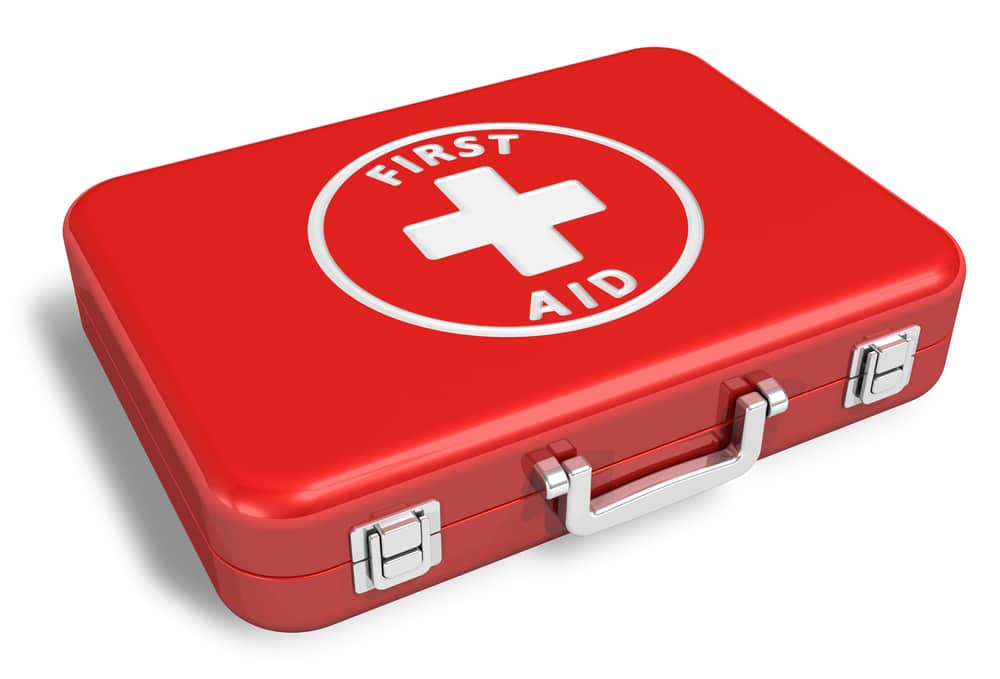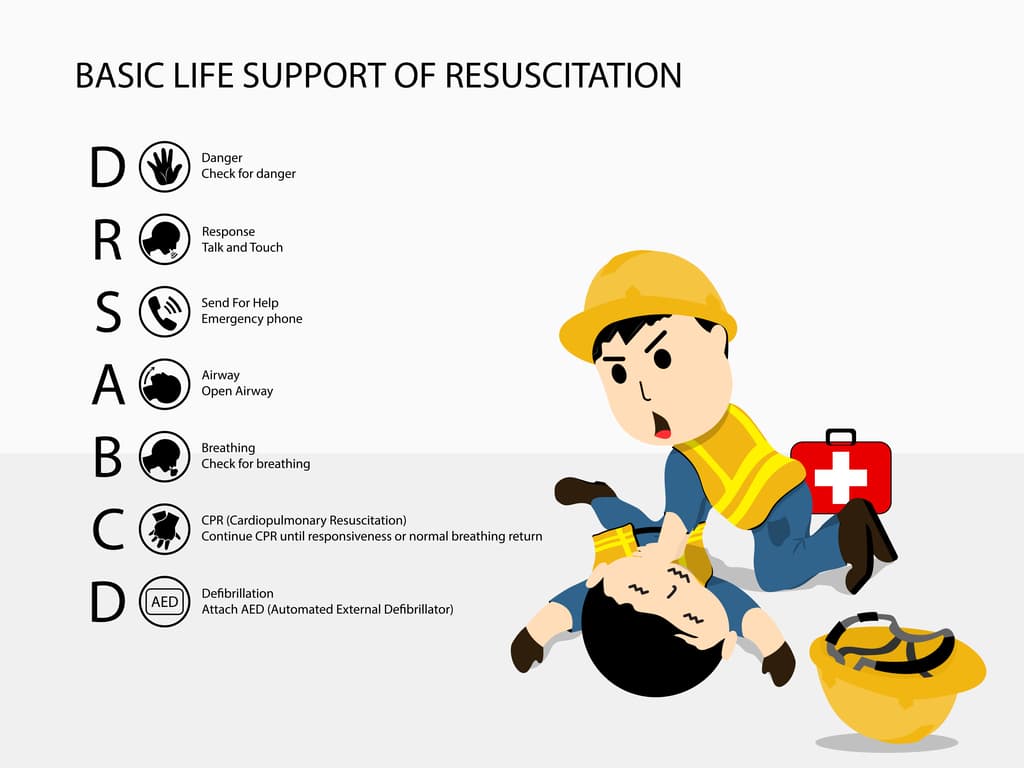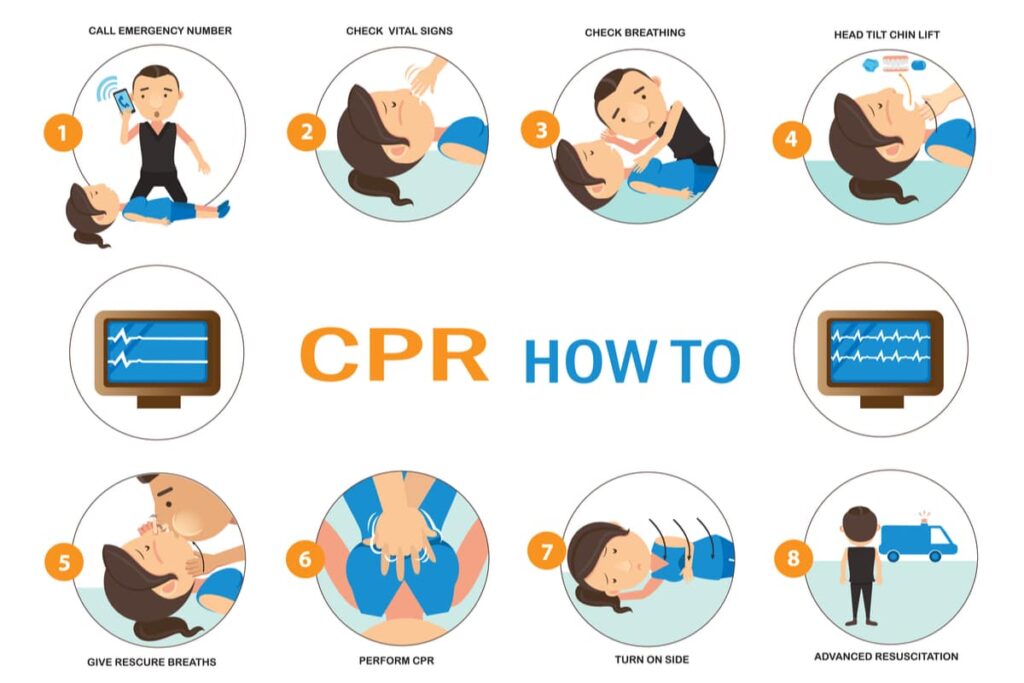Have you ever witnessed a situation where a seemingly healthy person suddenly slumped and became unresponsive? Do you know that you can help improve chances of survival if you start to give first aid immediately? This article highlights what you can do for a person who has had cardiac arrest while awaiting arrival of a doctor or transfer to a hospital for treatment.

Cardiac arrest
Cardiac arrest is a condition in which a person’s heart suddenly stops beating at a regular rhythm. It is different from a heart attack in which there is a blockage of blood flow (and oxygen) to the heart muscles resulting in death of that part of the heart. The latter may also lead to a cardiac arrest particularly if a large part of the heart is deprived of blood and oxygen.
What is first aid?
First aid is the immediate treatment given to an individual who has had a severe illness or injury.
First aid for cardiac arrest is also called cardio-pulmonary resuscitation (CPR). It is given as a bridge to hospital care after a cardiac arrest. It therefore cannot be a substitute hospital care.
The main aim of first aid is to get the heart pumping, pending when the person gets to the hospital for a more definitive treatment. At the hospital, the cause of the sudden cessation of pumping can be found out and treatment commenced immediately.


Why is first aid important
Since cardiac arrest can happen at any time or place, it is important that everyone learns how to provide first aid. First aid can make a big difference between life and death. First aid can increase recovery and reduce the risk of complications following a cardiac arrest.
When to start first aid
To know when first aid is required, you need to observe the person closely. Start giving first aid if the person does not respond to you and is not breathing normally . It can be carried out anywhere by anyone who is trained to give it.
How to offer first aid to a non responsive person.
First aid actions you can do are to first ensure safety for both the victim and rescuers. First move the person out of danger, remove tight clothings such as a necktie.

Step 1: Call out the person’s name (if you know it) or address him/ her as ma or sir. Call for help. Ask if they can hear you. If yes, then ask how they feel, if it has happened before and how you can help. You need this information for the emergency department doctor, just in case the person becomes unconscious later.
Step 2: Look, listen and feel for breathing.
Look at the chest, if the chest is moving, then the person is breathing. Take note of abnormal breathing such as gasping or breathing very slowly. Listen for any abnormal sounds coming from the chest or mouth such as wheezing. This will help you know if there is an obstruction in the throat either from choking while eating or an injury. Feel for breathing by placing the back of your hand close to the nostril. If the person is breathing, you’ll feel the warm air from the nostril.
Step 3: place the person on his/ her back on a firm surface and tilt the chin upwards to the sky. Quickly check that there’s no foreign body or food in the mouth. Remove it if you can. Check for the pulse by placing 3 fingers at the angle of the jaw, between the jaw and neck. If the person isn’t breathing or breathing is irregular, take a deep breath and exhale into the person’s mouth while pinching his/her nostrils. You could put a clean light cloth between both your lips or use a mask .
If you’re not comfortable with giving mouth to mouth because of fear of contracting some infections, then give only chest compressions. Do not leave the person’s side particularly if alone. Give 2 breaths then 30 chest compressions.
Step 4: Call for help again then commence chest compressions. Put the lower part of your palm near your wrist in the middle of the victim’s chest towards the left. Put the heel of your second hand on top of your hand and interlock your fingers. Now, raise your hand a little bit off the chest and press down on the chest 30 times at a regular rhythm.
The aim is to maintain blood circulation for as long as possible until help arrives for advanced life support. Ensure that your elbows are not flexed while at it. Once you are exhausted, let another person continue the chest compressions, while you rest.
An Automated external defibrillator (AED) if available, further increases chances of survival following a cardiac arrest. It is placed in public places such as airports. The AED is a device that assists to restart the regular rhythm of the heart by applying some shock waves through the chest wall. It can only be used by bystanders who have been trained to use it.
If there has been an accident and the person is bleeding, please apply pressure to the bleeding area to limit the blood loss. If the bleeding is from the limbs, you should tie it with a bandage or cloth to stop the bleeding. If there is no blood for the heart to pump, then your efforts at CPR will be wasted.
In trauma (accident) cases, an individual might sustain a cervical injury that is worsened by moving the neck to tilt the head. In this case, head tilt for first aid can be dangerous. It is safer to give only chest compressions to avoid worsening a cervical spinal cord injury. Spinal cord extends from the neck to the lower back. An injury to the upper cervical spinal cord can be fatal.
First aid box
Contents of a first aid box that are useful to resuscitate a person who has had a cardiac arrest include:
-Disposable sterile gloves
-Scissors to cut tight clothing or crepe bandage
-Bandages
-Pocket mask to give rescue breaths.
-Pentorch/ penlight to look into the mouth and check for obstruction.
-Hand sanitizer and antiseptic wipes.
-Sterile gauze
Who needs first aid training?
Everyone. World first aid day is marked every second Saturday in September. It is a day set aside to create awareness for first aid. Guidelines recommend that every person learns how to give first aid. It is not for only medics. It is recommended for school teachers, persons in the military and paramilitary, nannies, caregivers, and everyone.
First Aid Courses
First aid training courses are offered as online or offline in-person classes. Some online classes are offered free of charge and consist of video lectures, pictures and texts. Training May be free but you have to pay a token for your certificate. Since the guidelines change from time to time, refresher courses are imperative. Certificates are not transferable.
Some employers pay for their employees to get hands-on training at the workplace. If you have this opportunity, do not take it for granted. You never know when the skill will be needed to save a life.
First aid saves lives. Learn how to provide first aid and be a helpful heroic bystander to that person who suddenly has a cardiac arrest.
